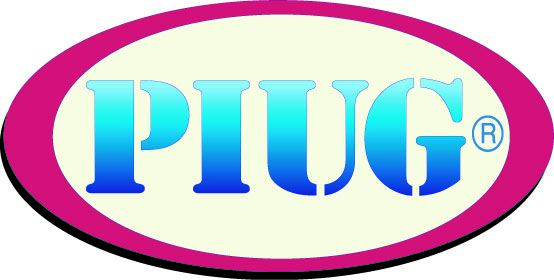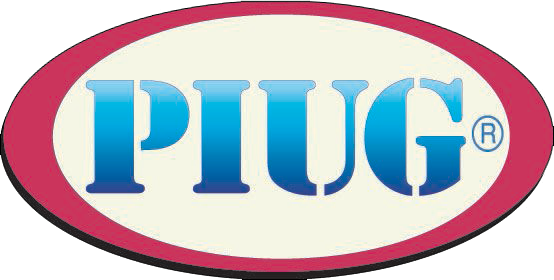Posted at the request of Bob Buntrock, the author of this review.
Information Sources in Patents, 4th Ed., Stephen Adams, de Gruyter Saur, Berlin/Boston, 2020. 663 p + xxiv, index, ISBN 978-3-11-055006-1, $114.99.
A welcome new edition and update of previous editions by this author. In addition to the 19 chapters in 663 pages there are 6 Annexes, 2 Appendixes, 44 figures (indexed/ToC), and about 150 tables (indexed/ToC). I’m familiar with the 2nd edition (2006) which had 236 pages, 13 chapters, 21 figures, 52 tables, 3 Annexes, and 3 Appendixes, a two- to three-fold increase in this 4th edition. I was able to access the 3rd edition (2011) as an e-book from the Fogler Library, Univ. of Maine. It has 360 pages, 17 chapters, 27 figures, 72 tables, 4 Annexes, and 3 Appendixes, about half the size of the 4th edition.
The author includes Prefaces to the 2nd and 3rd editions and in the preface to this 4th edition outlines the enhancements made. Noted are increases in the number of worldwide patent offices and the number of patent applications filed annually as well as greatly increased technology for machine translation and additional IT enhancements for the entire patenting process. Translation developments are especially important because of the decreasing dominance of English in the source documents. The expanding and even exploding number and contents of sources of information is a problem for any searching but especially for patent searchers and would-be inventors so a brief overview is provided in Chapter 12. Current awareness resources are described and certification of patent searches us covered along with a discussion of the future of patent searching.
The book is organized into two Parts and each of the 19 chapters has a list of references at the end. Part I covers patent processes and documentation in 9 chapters. Chapter 1 describes the principles of patenting including legal processes, patents as information tools (deferred examination and early publication, language of publication, 19 multilingual patent publishing entities, patent families, priorities, expense and difficulties in translation), and bibliographic standards. The standards are administered by the World International Patent Organization (WIPO). Alternative forms of Intellectual Property (IP) rights are also discussed.
National patent systems and agreements are discussed in Chapters 2-9: European (EP), United states (US), Japanese, Patent Co-operation Treaty (PCT), national patent systems of the G8 countries, Asian and Australian countries, South American countries and Mexico, and African and Middle Eastern countries as well as other regional patent systems. Each chapter discusses the history and development of the system(s), patent documents, and associated databases.
Chapter 2, EP patents, lists the 40 member countries, translation requirements for each entity, and relations with the European Union (EP). Chapter 3, US patents, discusses history (with a table of publication milestones), grace periods, first to invent vs. first to file, recent changes in the law, application procedures, examination processes, and Kind-of-Document (KD) codes. Japanese patents are discussed in Chapter 4 including history, document types, associated databases, and patent and indexing systems.
Chapter 5 covers the Patent Co-operation Treaty (PCT). The history and functions are covered The PCT does not grant or issue and patent applications and, like the EPO, each participating individual patent office examines its own applications which evolve from the PCT application. Publication sequences, associated databases, and other WIPO information resources are covered.
Chapter 6 covers the G8 countries: Canada, France, Germany, Italy, Russian Federation, United Kingdom, and the Eurasian Patent Organization. History, current law, documentation, and databases are discussed for each country. Chapter 7 covers patenting countries in Asia and Australia: China, Hong Kong and Macao, India, South Korea, North Korea, Taiwan, Asian national systems, and Australia. History, current law, patent documentation (including Chinese numbering systems), and databases are discusses for each country.
Chapter 8 covers patenting countries in South America and Mexico. An introduction covers treaty and trading status of 12 South American countries including Guyana, Suriname, French Guiana, Bolivia, Ecuador, Paraguay, and Uruguay. Major national patent systems in South America include Brazil, Argentina, Chile, Columbia, Peru, co-operative systems in South America, as well as Mexico. As before history, documentation, and databases are covered for each country.
Chapter 9 covers Africa and the Middle East. The introduction to Africa discusses the ratification statuses for 54 African States including Least-Developed Country status. South Africa, Morocco, Tunisia, Algeria, Egypt, and Kenya are covered in the usual fashion. The introduction to Middle Eastern States covers the complex history, governance, and colonial history of those states including these “minor” countries: Bahrain, Kuwait, Lebanon, Oman, Qatar, Syria, United Arab Emirates, and Yemen. Major national systems covered include Israel, Saudi Arabia, Jordan, and Iran as well as Regional patent systems in both Africa and the Middle East including the usual topics for each.
Chapter 10 describes patent guides and resources. The opening section notes the temporal nature of sources of patent information. An attempt is made to cover sources still extant and current as well as the history of the field. For searching, “how to” articles in The Kirk Other Encyclopedia by Edlyn Simmons and the late Stu Kaback are cited. Journals and magazines, past and current, discussing patent databases are cited as well as various patent user groups are cited including PIUG based in the US. Patent libraries in the UK, US, Germany, japan, China, South Korea are described as well as the PATLIB project in Europe and the WIPO ARDI/TISC Project.
Chapter 11 covers national and multi-national patent information sources. Still extant paper sources are described as well as CD-ROM, DVD, and linked disk-internet products. Detailed descriptions of proprietary databases follow: Derwent World Patents Index (DWPI) (Clarivate Analytics), PlusPat, FarmPat (Questel), WPAM Project (Oribit/Derwent/API), INPADOC, DocDB, Open Patent services (EPO), Pharm (Questel), IMS Patents Focus/Ark Patent Intelligence (IMS health/IQVIA), Derwent Geneseq (Clarivate Analytics), Chemical Abstracts/Marpat (CAS), Merged Markush Service (Questel), MAREC, Alexandria (Matrixware/IFI Claims Patent Services), and Diamond (Lighthouse IP). Public internet sources include national patent office databases as well as Espacenet (EPO), EPO Global Patent Index (GPI), DEPATISnet (German Patent and trademark Office), Googl Patents (Google), The Lens (Cambia), PatentScope (WIPO), and SumoBrain/FreePatentsOnline (SumoBrain Solutions). Controlled-access internet sources include TotalPatent One (Lexis-Nexis Univentio), PatBase (Minesoft/RWS), WIPS Global, QPAT, Orbit.com (Questel), PatSeer (Gridlogics), andPatently.com (EIP Europe/Patently). A discussion of encryption and secure systems closes the chapter.
Chapter 12 discusses the essential nature and legal background of the non-patent literature for patent searchers. Sources and services to be considered include open access journals, internet disclosures, reference guides, source indexes, special library sources, subject guides, reviews, tertiary literature, theses, “traditional knowledge” (commonly known with no documentation of discovery or prior use), conference literature and technical standards, technical disclosure bulletins, institutional repositories and preprint servers, and the now ubiquitous social media The grey literature, poorly archived or controlled bibliographically, includes ephemeral literature like pamphlets, technical support documentation, and datasheets as well as information posted on organizational websites.
(I’m reminded of a case for priority for a chemical species in the non-patent chemical literature. Donald Duck, in a Disney cartoon of the late ‘30s is credited with the discovery or diimide (HN=NH) decades before its discovery in the lab).
Chapter 13 covers alerting services (one of this reviewer’s specialties for all technical and chemical literature). Standard bulletins are exemplified by those of Derwent. (Not covered is the US Patent Gazette, published weekly in subject sections. I recall Stu Kaback saying the arrival of the Patent Gazette was the highlight of his week). In house strategies, or custom current awareness is also described (another of my specialties in my industrial career was current awareness profiles in general especially custom current awareness suited to the client).
Chapter 14 describes Common Search Types – patentability and freedom to operate searches, valuable information for definitions confusing especially to beginners to patent searching. Patentability searches are best done before a patent application is filed although it is less cost-effective if done later. It’s much easier to draft a patent application if the prior art – the body of relevant information on the topic – is already known. Otherwise, if subsequent relevant information is discovered the application may have to be amended. However, some companies or even entire industries do not have a full patent search done before filing and depend on the official search from the Patent Office. The reasons are usually to save the cost of the search but the organization may feel they know the field well enough to file without a search for other prior art. However, the patent applicants may want to continue to develop the technology after filing. Since it typically takes 12-15 months for the official report is received this could put a damper on valuable development and a pre-filing search, as well as monitoring of relevant information in the interim, can help avoid “surprises”. The basic requirements of patentability are also reviewed, especially novelty and inventive step. Multiple country and technology coverage are also discussed as well as the patent and non-patent literature and rapid updating. The latter has improved greatly in the last few years as many of the databases add patent documents the day of publication and others add fully indexed records within a few days of publication.
The other types of searches covered in Chapter are freedom-to-operate, freedom-to-practice searches (sometimes called infringement searches). The object is to avoid possibly infringing the patent of someone else. If one wishes to be active in areas covered by patent rights of others one must obtain permission or a license. Alternatively, one may modify one’s intend activities in the area. Failure to do so could lead to adverse financial and even legal consequences. Only the patent literature usually needs to be considered since no enforceable rights will be in non-patent sources. Further limitations include specific countries of interest, legal status of any patent discovered, and interpretation of claims, although the latter is usually done only by patent experts. However, the patent searcher can assist in acquiring information on the text of claims and legal status.
Chapter 15 describes portfolio and legal proceedings searching and Chapter 16 covers sources for legal status searching. Chapter 17 covers commercial intelligence search and analysis via state-of-the-art searches. These searches provide broad overviews of technology. Patent analysis tools and techniques for these searches are described.
Chapter 18 describes specialist searching techniques. Topics covered include citations and a brief history of citation searching for the non-patent literature is described. However, application to citation practices in the patent literature is more complicated. Citations listed in patents tend not to be complete, especially the “references cited” in US granted patents. In addition, the occurrence of patent families and differing citation practices, including citing different patents within the family, complete the issues further. Searching the various patent classifications is also covered. Additional tools include, where applicable, chemical and genetic structures, numerical data, and image data. Chapter 19 covers future developments including the future of patent searching including the trend towards certification of patent searchers.
The Annexes cover the member states of the PCT, reformatting national application numbers, website addresses, and comparisons of the classification systems. Appendix 1 is a glossary of patent terminology and Appendix 2 is an index of abbreviations. There is a general index.
This 4th edition of a valuable resource for information sources for patents providing significantly more information and currency for anyone interested in patent searching. Highly recommended for inclusion in the holdings of college libraries, commercial enterprises dealing with patents, and concerned individuals.
R. E. (Bob) Buntrock
Buntrock Associates
Orono, ME
buntrock16@roadrunner.com
 Search
Search Community
Community Job Board
Job Board
